Explicit Phonics that is Multisensory, Systematic and Learner Driven
Shhhhhhh! It’s a Secret!
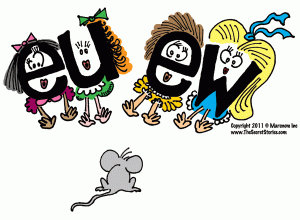
Secret Stories® works naturally with the brain by activating every learning channel for accelerated access to the “whole” phonics code from the earliest possible grade levels, making it one of the most highly effective reading instruction concepts available for both beginning and struggling, upper grade readers.
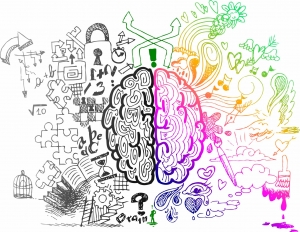
Secret Stories® aligns with the way our brain naturally learns by appealing to as many senses as possible through stories, movement, visuals, sounds, experiences and feelings. By engaging multiple modalities and pathways for learning, phonics skills are stored in different learning networks, providing learners with more avenues for easier retention and retrieval.
Studies have revealed that more than 99 percent of learning occurs at the nonconscious level. Learning at this level is effortless, and includes visual cues, sounds, experiences, and feelings processed by multiple memory systems and in varied learning domains.
By introducing information to the brain from as many angles as possible, more neural connections are created and strengthened. As a result, learning is more holistic and multidimensional. The more systems and modalities utilized for learning, the stronger the learners’ ability to receive and retrieve the information.
Secret Stories® Reading Strategies vs. Traditional Phonics Programs
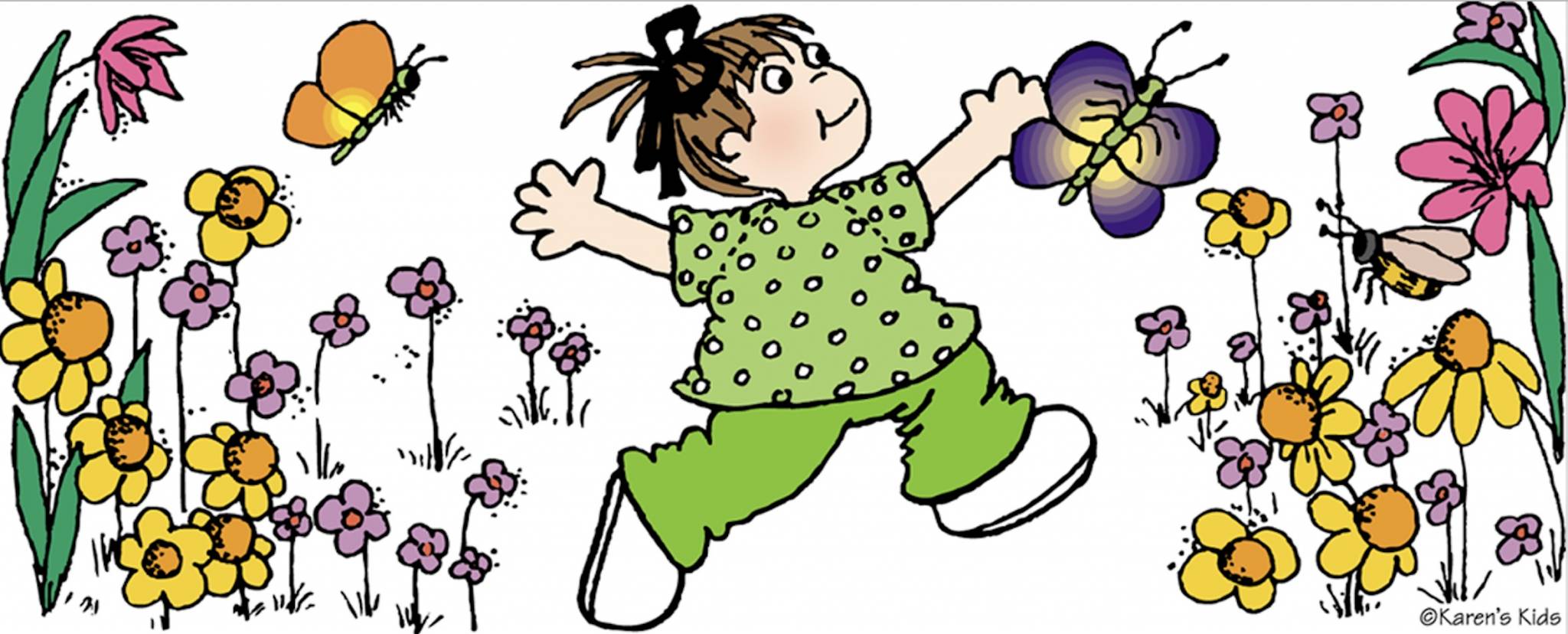
“Children need a flood of information, a banquet, a feast.” —Dr. Martha Pierson
Traditional methods of phonics instruction do not adequately make use of brain science and are ineffective at successfully engaging the whole brain for enhanced memory and learning. Secret Stories® aligns phonics instruction with how our brains actually learn best, engaging more neural pathways for stronger learner connections and easier skill retrieval. Weaving abstract letter sounds into stories makes them interesting, activating the brain’s positive emotional state and hooking the information into a strong memory-holding template.
Working with learners’ natural brain development, Secret Stories® shifts phonics instruction to the earlier developing, social-emotional “feeling” and psychomotor (motor muscle memory) networks, which are more primed for learning than the slower-developing, higher level cognitive processing centers.
This is in stark contrast with traditional phonics instruction, which targets the underdeveloped and less reliable executive processing centers through rote memorization of letter sounds and phonics skills. While the cognitive “thinking” domain requires conscious effort and attention be applied for learning, the affective “feeling” and “physical” motor domains do not. Learning occurs naturally and nonconsciously through these neural networks, engaging the whole brain for enhanced student learning.
“Emotions simply exist; we don’t have to learn them.” —Dr. James Asher
Tapping Into Body Intelligence for Accelerated Reading Skill Mastery
 Children are active learners, and research shows that learning is enhanced by movement, particularly when movement is embedded into instruction. Movement primes the molecular processes that help form memory. Embedding targeted movements into instruction enhances recall and aids in the transfer of skills to long-term memory. This is because what fires together is wired together in the brain. Therefore, performing a task or recalling information that causes different neurons to fire in concert strengthens the connections between them. In this way, learning becomes nonconscious and effortless.
Children are active learners, and research shows that learning is enhanced by movement, particularly when movement is embedded into instruction. Movement primes the molecular processes that help form memory. Embedding targeted movements into instruction enhances recall and aids in the transfer of skills to long-term memory. This is because what fires together is wired together in the brain. Therefore, performing a task or recalling information that causes different neurons to fire in concert strengthens the connections between them. In this way, learning becomes nonconscious and effortless.
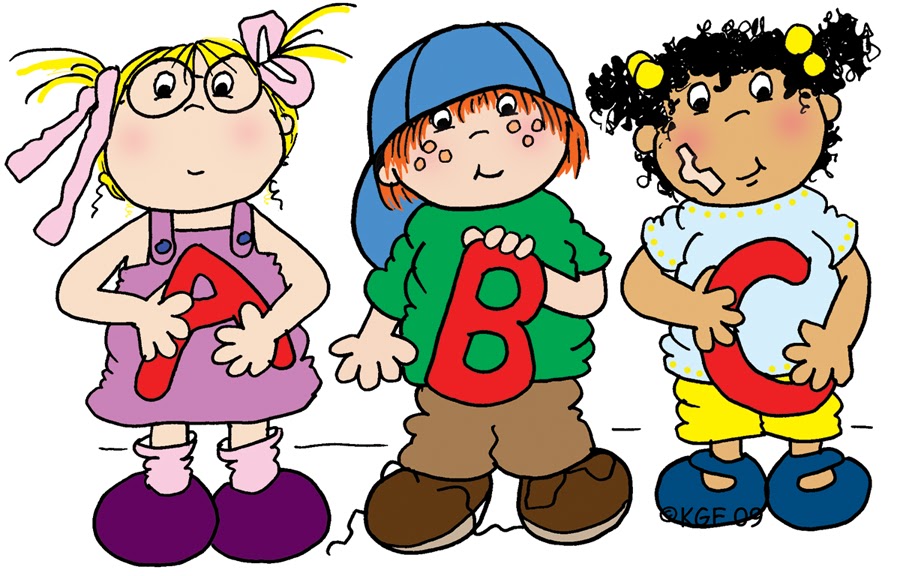 Secret Stories® makes use of early learners’ inherently stronger and more reliable motor memory neural pathways to accelerate mastery of the individual letter sounds (taking just two weeks to two months, via muscle memory) while at the same time, gaining simultaneous access to phonics patterns, or Secrets.
Secret Stories® makes use of early learners’ inherently stronger and more reliable motor memory neural pathways to accelerate mastery of the individual letter sounds (taking just two weeks to two months, via muscle memory) while at the same time, gaining simultaneous access to phonics patterns, or Secrets.
By employing muscle memory to fast-track mastery of the individual letters and sounds, pre-kindergartners and kindergartners are able to acquire them in just two weeks to two months— as compared to traditional instruction, which takes an entire kindergarten year. Shortening this learning curve is important because once kids know the sounds that letters are supposed to make, they begin to notice when letters aren’t “doing what they should,” and want to know their Secrets!
Giving beginning-grade learners simultaneous access to both individual letters sounds and Secrets allows them to bring more tools to the reading and writing table each day, without the designated “waiting time” typically required for skill introduction.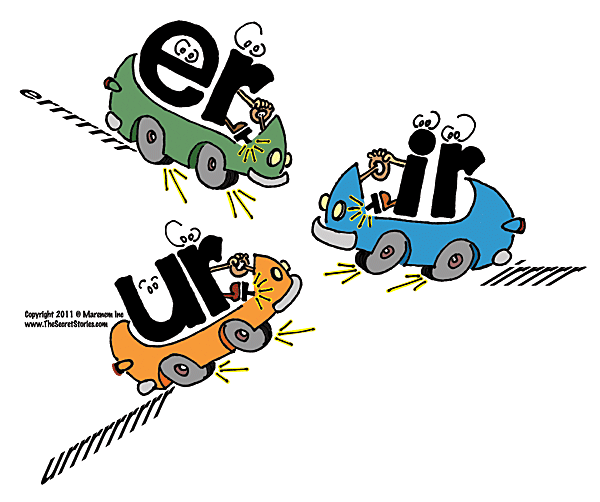
Secret Stories® embeds physical actions into stories for easy sound skill retrieval.
Stories on Phonics Patterns Put the Whole Brain to Work
The easiest way to trigger engagement in the affective “feeling” domain is through stories. Stories establish supportive conditions in the brain for learning and remembering, acting as “memory enhancers.” The structure of a story provides a sort of mental map upon which new information is more easily laid. Moreover, concepts presented in a story-based format receive a higher level of priority in the brain, often using an emotional hook to engage curiosity.
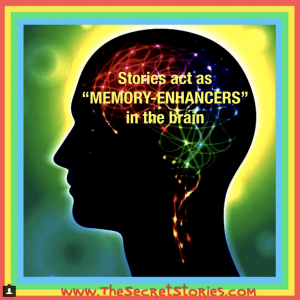
Stories can put the whole brain to work and are the most effective way to activate multiple areas of the brain simultaneously. Research shows that the more widespread the connections, the deeper the learning, and the easier the skill retrieval. Stories activate the emotional centers of the brain that aid memory, and unlike direct instruction, skill content delivered through storytelling promotes the formation of multi-layered memories that result in deeper learning experiences and easier skill retrieval. Additionally, the brain becomes more active when telling or listening to a story, prompting higher levels of learner engagement.
Secret Stories® provides early and struggling learners with a much-needed framework for memory construction. Each Secret becomes a strong memory-holding template in the brain, allowing for easy retention and retrieval of phonics patterns and sounds.
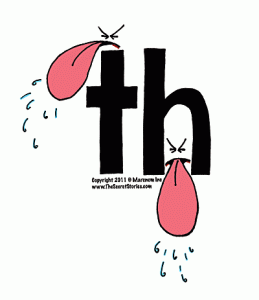 Unlike other story-based phonics methods that utilize talking animals or magical kingdoms to teach letter sounds, Secret Stories® connects letter behavior with kids’ own behavior, tapping into already familiar, learner frameworks of social and emotional understanding.
Unlike other story-based phonics methods that utilize talking animals or magical kingdoms to teach letter sounds, Secret Stories® connects letter behavior with kids’ own behavior, tapping into already familiar, learner frameworks of social and emotional understanding.
Within this readily familiar, thinking construct, inexperienced readers can predict the most likely sound behaviors of letters just as easily as they could the behaviors of their own friends and classmates.
These social and emotional hooks ground learning in personal meaning and purpose, and spark learners’ curiosity about letter sound behavior. For early grade teachers, as well as those working with struggling readers at the upper-grade levels, it can be difficult to foster learner curiosity about letter sounds and phonics patterns. This is why the affective “feeling” domain is the ideal doorway through which to channel these critical skills.
Secret Stories® puts the whole brain to work, activating multiple areas of the brain simultaneously for deeper learning, stronger connections, and easier skill retrieval.
Activating the Brain’s Emotional Systems for Learning
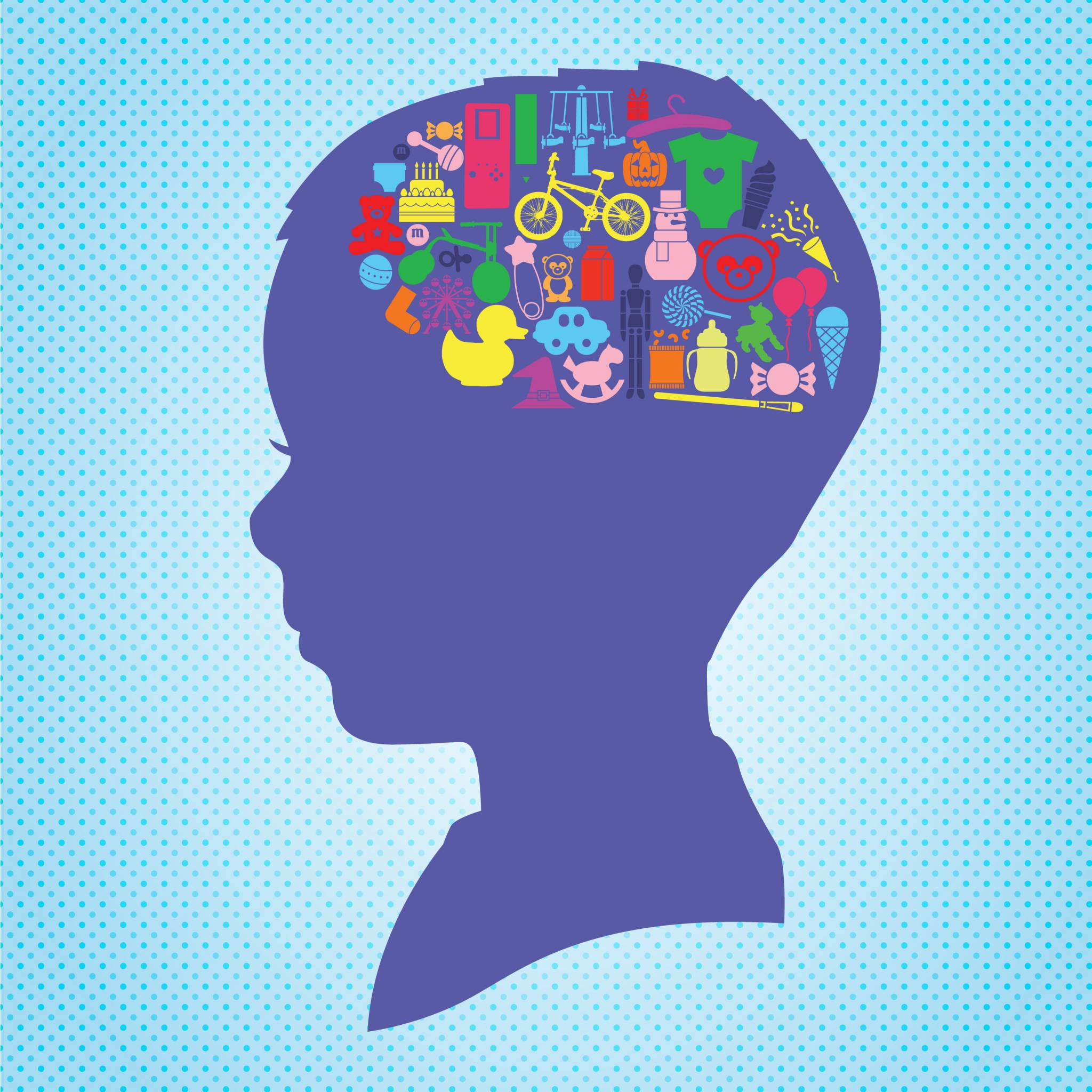 “It is literally neurobiologically impossible to think deeply about things you don’t care about. The best and most durable learning occurs when content sparks interest and is relevant to a child’s life. —Dr. Mary Helen Immordino-Yang.
“It is literally neurobiologically impossible to think deeply about things you don’t care about. The best and most durable learning occurs when content sparks interest and is relevant to a child’s life. —Dr. Mary Helen Immordino-Yang.
Secret Stories® makes use of the brain’s emotional systems to forge meaningful connections to abstract phonics skills and increase early learner engagement. Cloaking phonics skills as “secret” stories to explain their behavior when they get together aligns with the way in which early learners think and learn on a daily basis.
Using the same decision-making framework that drives kids’ behavior on a daily basis, Secret Stories® makes it easy for learners to “put themselves in the letters’ shoes” and predict their most and next most likely sounds in words.
Genuine understanding depends on making emotional connections between concepts. Emotion guides our learning. If something is emotionally stimulating, it is marked for memory and prioritized for learning in the brain.
Secret Stories® teaches phonics within a context that is meaningful to kids—forging connections to otherwise meaningless skills in order to make them relevant to learners, and thereby marking them for memory in the brain.
Sparking Curiosity for Learner Driven Reading Instruction
Sense and meaning are among the major criteria that the brain uses in deciding what to encode into long-term memory. If something does not make sense, the brain will drop it. The brain seeks meaning and relevance, learning best on a need-to-know basis. However, traditional phonics instruction only offers arbitrary rules for letter-sound behaviors with no meaning, only rote memorization and skill-based practice.
Secret Stories® accelerates learner access to the code by shifting instructional emphasis from skill-practice to skill-understanding. Secret Stories® disguises phonics skills as “secrets” to make them important to kids—something that they are curious about and want to know. This makes them meaningful and relevant, and therefore, easy to teach and learn.
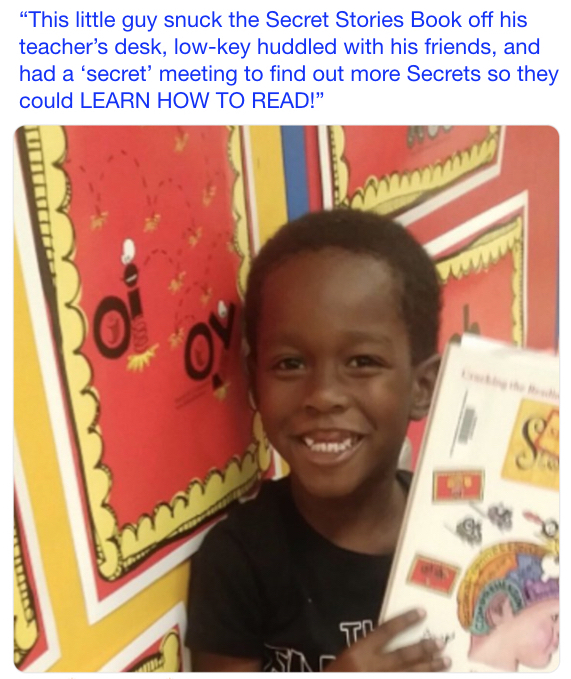
These skill-based Secrets can be shared whenever and wherever they are needed throughout the instructional day. The more Secrets kids know, the more they can read and write independently, using the posters to recall the sound patterns for reading and the spelling patterns for writing.

A cornerstone of Secret Stories® instructional design is simultaneous skill access with “dual-track” instruction, ensuring an explicit and systematic approach to skill introduction that is also learner driven.
Secret Stories® ensures that learners get what they need when they need it in order to read and write what they want, while systematically prioritizing ongoing skill introduction based upon teaching what’s most needed first (i.e. vowels, Mommy E®, Sneaky Y®, Babysitter Vowels®, etc).
Providing “dual-track” access to the skills kids need to read and write ensures that beginning and struggling readers are able to bring more tools to the reading and writing table each day, so as to take the maximum value away.
“Instruction in letter-sound relationships is of little value or utility unless the child is interested in using those letter–sound relationships to read or write.” — Dr. Marilyn Adams
By maximizing early learner access to the code, beginning learners are empowered to read 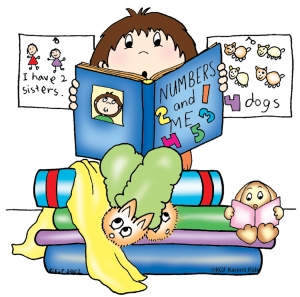 books that are of genuine interest to them, and to write the stories that they want to tell. Their ability to engage with text in ways that are meaningful to them serves to motivate ongoing reading and writing experiences, which in turn, increase their overall level of skill ability.
books that are of genuine interest to them, and to write the stories that they want to tell. Their ability to engage with text in ways that are meaningful to them serves to motivate ongoing reading and writing experiences, which in turn, increase their overall level of skill ability.
Whereas traditional reading and phonics programs require time be set aside in which to teach grade-specific, phonics rules through repetitious, skill-based practice, Secret Stories® multi-sensory learning experiences are “baked-in” to reading and writing across the instructional day for easy transfer to skills.
Whenever and wherever kids are engaging with text, they are discovering “new” Secrets and revisiting “old” ones! The more Secrets they know, the more words they can read and write… and the more they read and write, the more Secrets they want to know.
“Need to know” is the driving force behind Secret Stories® accelerated instruction, and it is also a basic tenet of brain based learning upon which Secret Stories® is built.
Secret Stories® Phonics: A Playground for Critical Thinking

Curiosity is an aroused state of the brain that has complex and interconnected processes at play.
“When kids are curious, they are open, safe and in an intellectually playful place in which they can explore. In this optimal learning state, learners begin to drive their own learning and instruction, which is the evolutionary ideal.” —Dr. Mary Immordino-Yang.
Traditional phonics instruction undermines a learner’s development of a proclivity toward a curious mind state, primarily because of the most commonly heard replies to learners’ questions are, “It just is… It just does…. You just have to remember.”
Beginning-grade level learners spend countless hours memorizing hundreds of sight words with little instructional time left to acquire the building blocks needed to read and write. Within this common instructional scenario, the instructional emphasis is placed on teaching the reading and not the reader. When teachers overly focus on the acquisition of the building blocks, students miss the application opportunity.
“If you overly focus on the acquisition of the building blocks (i.e. phonics skills), kids don’t have a sense of how to apply those things in the world (i.e. reading and writing). If you overly focus on the world, they may notice problems, but have no skills with which to solve the problems. They need a balance of both.” — Dr. Mary Helen Immordino-Yang
Secret Stories® balances the teaching of phonics skills with reading and writing by giving beginning learners access to as much of the code as possible, as soon as possible, so as to be able to make sense of daily experiences and interactions with text.
Its instructional design fosters a curious state—one in which learners explore and notice, and then follow what they have noticed and try to play it out to read and spell words. When a learner asks “why,” it means that they know enough to know that something isn’t right, and that they are motivated to get to the bottom of it. A learner that is engaged in this deep learning process is both active and reflective.
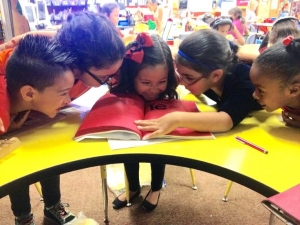
“This deep learning state provides a context for understanding in which passion and insatiable curiosity flourish, weaving a virtual tapestry of connections that grounds one’s learning in the roots of personal meaning and purpose.” —Stephanie Marshall-Pace
Secret Stories® brain based approach to phonics skill acquisition makes it one of the most highly effective, reading instruction concepts available to educators.




 Children are active learners, and research shows that learning is enhanced by movement, particularly when movement is embedded into instruction. Movement primes the molecular processes that help form memory. Embedding targeted movements into instruction enhances recall and aids in the transfer of skills to long-term memory. This is because what fires together is wired together in the brain. Therefore, performing a task or recalling information that causes different neurons to fire in concert strengthens the connections between them. In this way, learning becomes nonconscious and effortless.
Children are active learners, and research shows that learning is enhanced by movement, particularly when movement is embedded into instruction. Movement primes the molecular processes that help form memory. Embedding targeted movements into instruction enhances recall and aids in the transfer of skills to long-term memory. This is because what fires together is wired together in the brain. Therefore, performing a task or recalling information that causes different neurons to fire in concert strengthens the connections between them. In this way, learning becomes nonconscious and effortless.


 Unlike other story-based phonics methods that utilize talking animals or magical kingdoms to teach letter sounds, Secret Stories® connects letter behavior with kids’ own behavior, tapping into already familiar, learner frameworks of social and emotional understanding.
Unlike other story-based phonics methods that utilize talking animals or magical kingdoms to teach letter sounds, Secret Stories® connects letter behavior with kids’ own behavior, tapping into already familiar, learner frameworks of social and emotional understanding. “It is literally neurobiologically impossible to think deeply about things you don’t care about. The best and most durable learning occurs when content sparks interest and is relevant to a child’s life. —Dr. Mary Helen Immordino-Yang.
“It is literally neurobiologically impossible to think deeply about things you don’t care about. The best and most durable learning occurs when content sparks interest and is relevant to a child’s life. —Dr. Mary Helen Immordino-Yang.


 books that are of genuine interest to them, and to write the stories that they want to tell. Their ability to engage with text in ways that are meaningful to them serves to motivate ongoing reading and writing experiences, which in turn, increase their overall level of skill ability.
books that are of genuine interest to them, and to write the stories that they want to tell. Their ability to engage with text in ways that are meaningful to them serves to motivate ongoing reading and writing experiences, which in turn, increase their overall level of skill ability.


